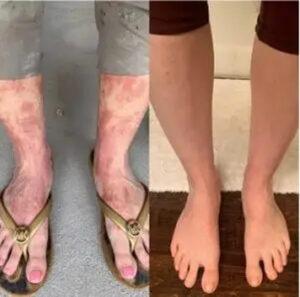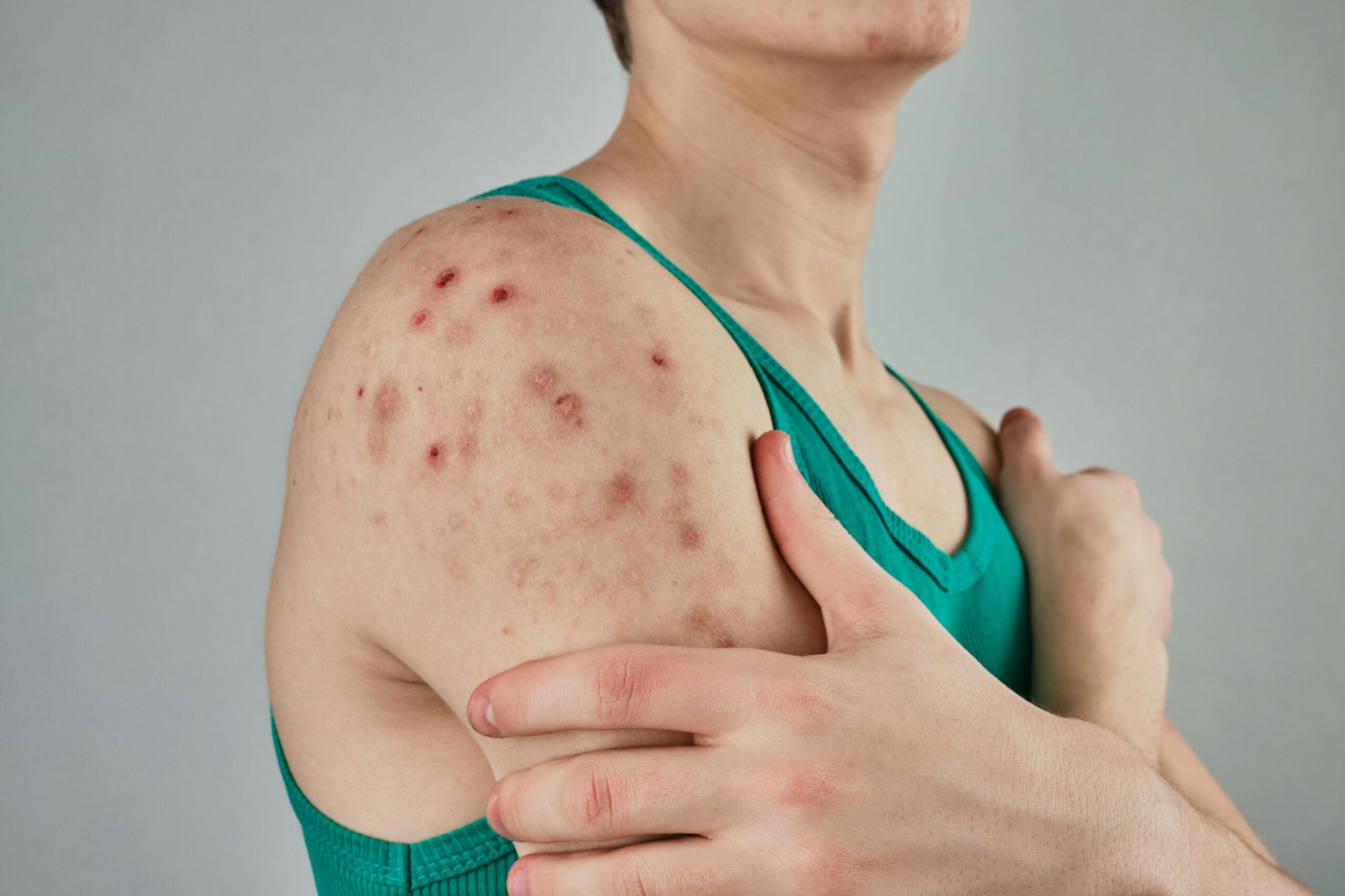RLT Can Help People Find Relief
RLT for eczema has recently garnered attention worldwide. The studies suggest that Red Light Therapy could be an effective tool for treating conditions like eczema, psoriasis, acne scars, and rosacea.
Red and Green Light Therapy has gained popularity as a natural anti-aging tool because it has been shown to boost collagen production by 138 –211%, tighten the elastin layer, and, as a result, improve skin tone and texture. Additionally, RLT enhances ATP production in cellular mitochondria, thereby optimizing cellular regeneration. New capillaries can also form, allowing more oxygen and nutrients to be delivered to the skin. ATP can also reduce inflammation.
What is Eczema?
Eczema, also known as atopic dermatitis, is the most common form of dermatitis.[1] People with the disease tend to have dry, itchy skin prone to infection. Genetic and environmental factors are also believed to contribute to the pathogenesis of this condition.
The condition affects millions of people worldwide and can appear at any age, though it most commonly develops in childhood. Eczema creates a cycle of inflammation where the skin barrier becomes compromised, allowing irritants and allergens to penetrate more easily and trigger flare-ups.
Common symptoms include red, inflamed patches of skin, intense itching, scaling, and sometimes oozing or crusting. The condition often appears in specific areas, such as the face, hands, feet, and the creases of the elbows and knees. While eczema cannot be cured, various treatments can help manage symptoms and reduce flare-ups, enabling individuals to maintain better skin health and a higher quality of life.
How Does Red Light Therapy For Eczema Work?
The researchers suggest that red light (630nm–700nm) can penetrate deeply into the skin, promoting blood circulation and healing.[2] New capillaries can form, allowing more oxygen and nutrients to be delivered to the skin. RLT increases the production of ATP from the cell mitochondria, which results in more “energetic” skin cells that can now function optimally, regenerate, and heal. ATP also reduces inflammation that can lead to the main symptom of psoriasis: abnormally rapid replication of skin cells. Additionally, Red Light Therapy has been shown to activate the lymphatic system and stimulate DNA and RNA synthesis.
Since RLT is suggested to help restore normal cell function, the growth rate will normalize, and the patient will experience fewer and less intense flares, as well as reduced redness, itching, flaking, and other symptoms. In conclusion, Photobiomodulation devices, such as the Red Light Therapy beds, are considered a safe option for individuals seeking non-invasive and pain-free eczema treatment.
The Benefits of Red Light Therapy Wavelengths for Eczema

Research suggests that Red Light Therapy is a natural treatment option for eczema and psoriasis, with promising results in reducing itchiness and inflammation, as well as helping to speed up the skin’s healing process.[3] In addition to reducing itchiness and other health benefits demonstrated in recent studies, natural Red Light Therapy is consistently found to be safe and pain-free.
- Reduces the severity of skin lesions
- Reduces inflammation
- Restores skin barrier
Many people exploring red light therapy for eczema at home find it complements their existing skincare routine effectively. LED light therapy for eczema works by penetrating the skin to specific depths, reducing cellular inflammation and promoting healing.
Red light therapy for eczema, as evidenced by before-and-after results, often shows improved skin texture, reduced redness, and fewer flare-ups over time. Many people also report noticeable relief from red light therapy for itchy skin treatments. Light therapy for eczema sessions can be easily incorporated into daily routines, making eczema light therapy at home a convenient option for ongoing symptom management.
The photo below was taken by Bill Hanks at Huemn in Houston, TX. The client, after 8 weeks of 2 sessions per week, full POLY (ARRC LED’s, Red/Green/NearInfrared combination) was completely off of steroids and meds with full recovery.
The Research For Red Light Therapy and Eczema Treatment
In one study, in particular, patients with eczema were treated with Red Light Therapy, and the researchers obtained the following results:[4]
- Itchy sensations decreased in 63 of 81 cases (78%) after this therapy.
- Skin eruption improved in 57 of 81 patients.
- There were no side effects during and after RLT.
- Major histocompatibility complex antigen and intercellular adhesion molecule (ICAM-1) expression on epidermal cells decreased after the therapy.
- CDI-positive epidermal dendritic cells did not change before and after RLT.
These results demonstrate that red light therapy can be a valuable addition to eczema management strategies. The significant reduction in itching for nearly 80 percent of patients addresses one of the most challenging and disruptive symptoms of the condition. The improvement in skin eruptions for over 70 percent of participants indicates that the therapy can help alleviate the visible aspects of eczema, which often impact quality of life.
Most importantly, the absence of side effects makes this a safe treatment option that patients can use without concern for additional skin irritation or adverse reactions that sometimes occur with other therapies.
Are There Side Effects of Red Light Use?
Red light therapy devices are dose-optimized to ensure maximum efficacy while minimizing side effects when used correctly. RLT uses specific wavelengths of near-infrared light that don’t produce harmful UV radiation. Most people experience no adverse effects from photobiomodulation treatments, making it a safe treatment option for various skin conditions.
The anti-inflammatory properties of LED light therapy actually support the skin barrier, rather than compromising it, unlike some other light treatments. However, some people may experience mild eye strain if they look directly at the lights, which is why protective eyewear should always be used during light therapy sessions.
Certain health conditions require caution when considering red light therapy as part of a treatment plan. Healthcare providers typically advise against photobiomodulation for people with active skin cancer in the treatment area, as the light could potentially stimulate cellular activity in malignant tissues.
Pregnant women and people with epilepsy should consult with a board-certified healthcare provider before starting any light treatment regimen. Individuals with severe eczema or other inflammatory skin conditions should consult a dermatologist to determine if red light therapy complements their existing eczema treatments, including topical medications, moisturizers, and other skincare approaches.
While red light therapy shows promise for supporting collagen production and reducing inflammation, it should be part of a comprehensive approach that may include traditional dermatology treatment options.
